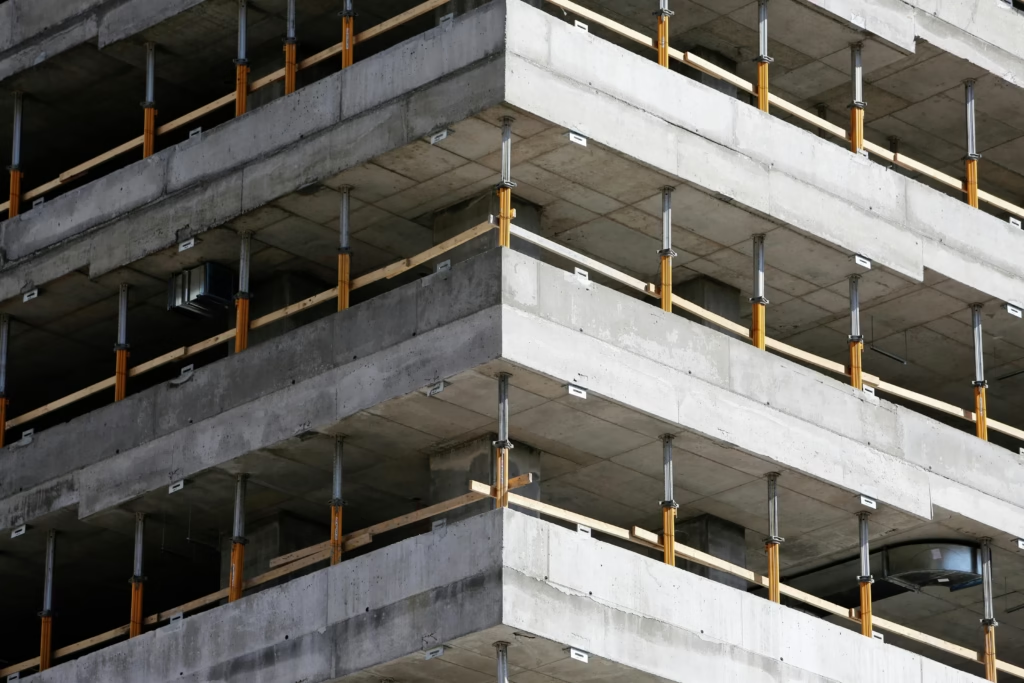Shear keys play an essential role in modern structural engineering, providing critical resistance against lateral forces such as earthquakes, wind, and sliding loads. These features are integral to the stability of diverse structures, including bridges, retaining walls, basements, precast buildings, culverts, masonry walls in seismic regions, and steel columns. This article explores the purpose, types, and applications of shear keys across various structures, showcasing their significance in maintaining structural integrity.

Purpose of Shear Keys
The primary purpose of shear keys is to resist lateral forces like earth pressure, water pressure, wind, and seismic loads. They enhance the stability and integrity of structures by preventing excessive movement between structural components. In some cases, shear keys serve as sacrificial elements, absorbing forces to protect other parts of a structure. For instance, in bridges, they prevent the transmission of large seismic forces to abutment piles. Overall, shear keys contribute significantly to the durability and safety of structures in challenging load environments.
Types of Shear Keys
Shear keys can be categorized based on their materials and design:
- Concrete Shear Keys: Common in precast constructions and residential buildings, these are formed from concrete to integrate seamlessly into structural elements.
- Steel Shear Keys: These are used in specific applications like steel column bases, where a steel block or pad provides resistance.
- Steel Reinforcement as Shear Keys: In certain cases, such as between basement walls and footings, reinforcing bars act as shear keys to resist movement and enhance shear strength.
Applications of Shear Keys in Various Structures
1. Bridge Structures
Shear keys are indispensable in bridges, where they provide lateral transverse support to the superstructure under seismic and other lateral loads. In small to medium-sized bridges, they are placed in abutments to enhance stability. During strong earthquakes, shear keys often function as sacrificial elements, preventing excessive forces from damaging abutment piles.
Bridges utilize two types of shear keys:
- Exterior Shear Keys: Easy to inspect and repair but more exposed to environmental factors.
- Interior Shear Keys: Located within the structure for added protection but harder to access.
Examples include concrete and steel shear keys, as well as cutoff shear keys in precast concrete girder bridges.
2. Retaining Walls
Shear keys are used at the base of retaining walls to increase their resistance to sliding forces caused by earth pressure. Typically, they are placed beneath the retaining wall stem, simplifying the placement of reinforcement bars, which extend directly from the wall.
Design considerations, as per ACI 318-17 standards, suggest that a shear key’s width should be at least twice its depth to ensure shear strength rather than flexural failure. For example, a shear key might be constructed 0.91 meters from the footing toe, with dimensions of 0.508 meters in width and 0.381 meters in depth.
3. Footing-Basement Wall Joints
In the joint between a basement wall and its footing, shear keys provide essential resistance to lateral forces. These keys are often cast as part of the wall and extend into a groove or keyway in the footing.
Variations include:
- Shear keys combined with vertical reinforcement bars to increase resistance.
- Upturned shear keys, which are part of the footing but less common in residential projects.
Reinforcement bars, in addition to resisting bending forces, can serve as shear keys, offering dual functionality to withstand both bending and shear forces.
4. Steel Column Base and Footing Joint
Specialized shear keys are employed in steel column bases to resist shear forces at the joint with the footing. These can take the form of I-stubs, T-sections, or steel pads welded to the bottom of the base plate. This approach provides robust shear resistance while accommodating the unique structural demands of steel columns.
5. Precast Concrete Connections
Shear keys are integral to precast construction, where they connect separate components and enhance the shear resistance of joint surfaces. These keys are typically cast into precast panels, providing a secure and durable connection between structural elements.
6. Masonry Walls in Seismic Regions
In earthquake-prone areas, masonry walls are equipped with shear keys during manufacturing. These keys resist out-of-plane forces, ensuring stability between adjacent blocks. This is particularly important during seismic events, where such forces can compromise the integrity of masonry structures.
Conclusion
Shear keys are a vital element in structural engineering, ensuring stability and resilience against lateral forces. Their diverse applications, from bridges and retaining walls to precast panels and masonry walls, highlight their versatility and importance. By enhancing shear resistance and providing sacrificial elements in high-stress scenarios, shear keys safeguard structures against potentially devastating loads.
As modern engineering continues to evolve, shear keys remain an essential component in the design and construction of safe and durable structures, particularly in seismic regions and environments subject to significant lateral forces. Their thoughtful application ensures the longevity and reliability of critical infrastructure worldwide.
